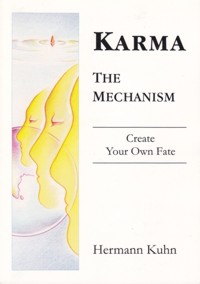
Alparambhaparigrahatvam manusasya (17)
Activities with mild attachment and moderate possessions attract karma that leads to incarnation(s) in human form. (17)
Acquiring a human body is an essential prerequisite for reaching freedom from all karmic limitations.
In our last incarnation before reaching ultimate freedom we need to dissolve all our remaining karma. We cannot use the bodies of the nether and the celestial regions (devas and narakas) for this purpose. They are instruments that manifest only either the negative or the positive variation of karma (see sutra 20 and 21). Because they do not allow the simultaneous activation of both karmic effects, the parallel dissolution of positive and negative karma cannot take place.
The human body is the only form capable of activating positive and negative karma simultaneously and in a balanced way. The following activities and attitudes manifest a human form:
- understanding and compassion for other beings
- friendly, helpful, exemplary behavior
- gentle disposition
- mild forms of negative emotions and attachments and
- an attitude at the time of death free of negative emotions and attachments.
In general this means a balanced, mild character.
Now - it is quite obvious that our world is definitely not populated by only balanced people with mild disposition. Since we easily observe great numbers of passion-driven people committing the most outrageous actions, their incarnations in human form must have a different cause than the one mentioned above.
When a bodily form manifests, its character is determined by the amount of active karmic matter only, never by its inactive, latent karma. Therefore incarnations in human form also become possible when only a small part of the existing karma is activated while the main mass of positive and negative karma stays in its dormant, latent state.[28]
Latent karma encompasses all desires, aspirations and attachments we could not yet fully experience or manifest during this or previous bodily existences. These desires originate in our drive to realize the ideals and abilities we sense deeply within us.
Latent karma does not 'store' 'detailed actions of our past lives' as the vague Western karma-concept incorrectly presumes. It only reflects that part of our potential for which an opportunity for manifestation has not arisen yet, or for which the right circumstances were not yet present.
During the course of human embodiment some part of this dormant karma may get triggered by outside experiences or inner motivation. When it activates, it then may generate impulses for the highly negative actions we observe in our present world.
When we actively strive for freedom from all karmic limitations, these negative actions of others affect us only if they trigger latent karma within us as well. If we have no karma (no emotional tendencies) left that could cause involvement in e.g. negative global events, our path will not be touched by outside circumstances.
- By equanimity and mild disposition in former incarnations we acquired the karma necessary for human embodiment. This karma is activated now.
- All excessive positive and negative karma that may prevent human embodiment recedes into an inactive, latent state. Yet in this case the mere existence of latent karma prevents us from reaching ultimate freedom.
 Hermann Kuhn
Hermann Kuhn
